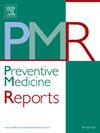The built environment and place attachment: Insights from Japanese cities
IF 2.4
3区 医学
Q2 PUBLIC, ENVIRONMENTAL & OCCUPATIONAL HEALTH
引用次数: 0
Abstract
Objective
Place attachment plays an important role in individuals' health and well-being. Understanding the associations between urban design attributes and place attachment can inform strategies to promote place attachment. This study aims to examine the associations between walkable built environment metrics and place attachment.
Methods
This study used data collected from October to November 2020, involving 25,340 adults across 21 major cities in Japan. Geographic address information was used to measure objective walkability, while perceived walkability and place attachment were assessed using adapted scales. Ordinary least squares regression models were employed to analyse associations.
Results
For individual metrics, three objective measures—availability of destinations, population density, and street integration—were positively associated with place attachment. Several perceived measures, including access to shops, daily life facilities, public green spaces, public transports, the presence of paths, crime safety, and aesthetics, also showed positive associations with place attachment. For composite indices, traditional walkability, space syntax walkability, and perceived walkability were positively correlated with place attachment.
Conclusions
These findings demonstrate the associations between walkable built environment metrics and place attachment, showing variations in metric types.
求助全文
约1分钟内获得全文
求助全文
来源期刊

Preventive Medicine Reports
Medicine-Public Health, Environmental and Occupational Health
CiteScore
3.90
自引率
0.00%
发文量
353
 求助内容:
求助内容: 应助结果提醒方式:
应助结果提醒方式:


